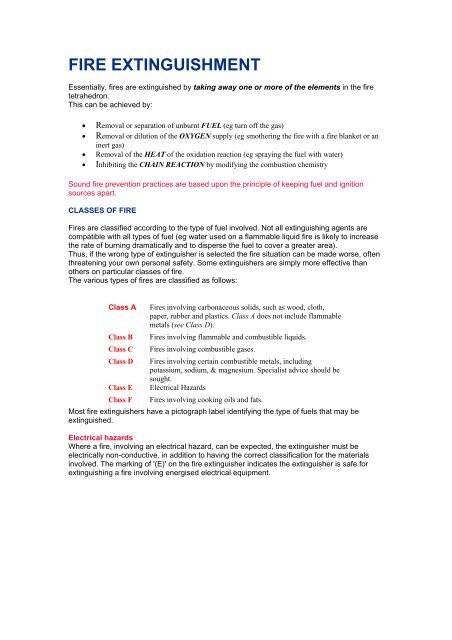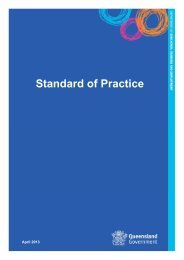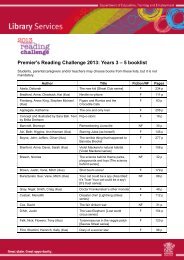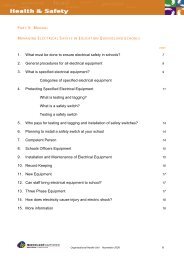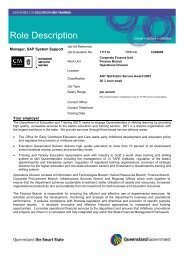Theories of Fire, Fire Extinguishment & Instruction of the use of ...
Theories of Fire, Fire Extinguishment & Instruction of the use of ...
Theories of Fire, Fire Extinguishment & Instruction of the use of ...
You also want an ePaper? Increase the reach of your titles
YUMPU automatically turns print PDFs into web optimized ePapers that Google loves.
FIRE EXTINGUISHMENT<br />
Essentially, fires are extinguished by taking away one or more <strong>of</strong> <strong>the</strong> elements in <strong>the</strong> fire<br />
tetrahedron.<br />
This can be achieved by:<br />
• Removal or separation <strong>of</strong> unburnt FUEL (eg turn <strong>of</strong>f <strong>the</strong> gas)<br />
• Removal or dilution <strong>of</strong> <strong>the</strong> OXYGEN supply (eg smo<strong>the</strong>ring <strong>the</strong> fire with a fire blanket or an<br />
inert gas)<br />
• Removal <strong>of</strong> <strong>the</strong> HEAT <strong>of</strong> <strong>the</strong> oxidation reaction (eg spraying <strong>the</strong> fuel with water)<br />
• Inhibiting <strong>the</strong> CHAIN REACTION by modifying <strong>the</strong> combustion chemistry<br />
Sound fire prevention practices are based upon <strong>the</strong> principle <strong>of</strong> keeping fuel and ignition<br />
sources apart.<br />
CLASSES OF FIRE<br />
<strong>Fire</strong>s are classified according to <strong>the</strong> type <strong>of</strong> fuel involved. Not all extinguishing agents are<br />
compatible with all types <strong>of</strong> fuel (eg water <strong>use</strong>d on a flammable liquid fire is likely to increase<br />
<strong>the</strong> rate <strong>of</strong> burning dramatically and to disperse <strong>the</strong> fuel to cover a greater area).<br />
Thus, if <strong>the</strong> wrong type <strong>of</strong> extinguisher is selected <strong>the</strong> fire situation can be made worse, <strong>of</strong>ten<br />
threatening your own personal safety. Some extinguishers are simply more effective than<br />
o<strong>the</strong>rs on particular classes <strong>of</strong> fire.<br />
The various types <strong>of</strong> fires are classified as follows:<br />
Class A <strong>Fire</strong>s involving carbonaceous solids, such as wood, cloth,<br />
paper, rubber and plastics. Class A does not include flammable<br />
metals (see Class D).<br />
Class B <strong>Fire</strong>s involving flammable and combustible liquids.<br />
Class C <strong>Fire</strong>s involving combustible gases.<br />
Class D <strong>Fire</strong>s involving certain combustible metals, including<br />
potassium, sodium, & magnesium. Specialist advice should be<br />
sought.<br />
Class E Electrical Hazards<br />
Class F <strong>Fire</strong>s involving cooking oils and fats.<br />
Most fire extinguishers have a pictograph label identifying <strong>the</strong> type <strong>of</strong> fuels that may be<br />
extinguished.<br />
Electrical hazards<br />
Where a fire, involving an electrical hazard, can be expected, <strong>the</strong> extinguisher must be<br />
electrically non-conductive, in addition to having <strong>the</strong> correct classification for <strong>the</strong> materials<br />
involved. The marking <strong>of</strong> '(E)' on <strong>the</strong> fire extinguisher indicates <strong>the</strong> extinguisher is safe for<br />
extinguishing a fire involving energised electrical equipment.


